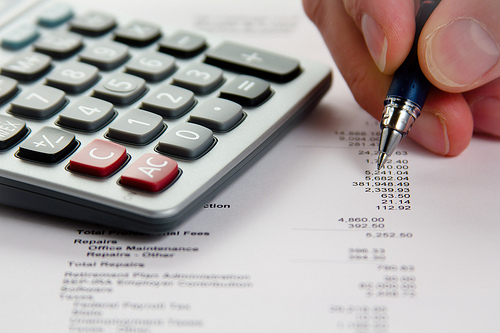When you work for yourself, the need to plan for taxes can’t be overstated. Therefore, we always suggest that freelancers store away 20-30% of their income to pay what they owe in taxes. This should cover taxes due from both income and self-employment sources. The key is planning ahead of the IRS and keeping better track of income and expenses throughout the year. As a freelancer, you’ll likely be able to deduct typical household expenses from your taxable income. For example, you can deduct any work-related expenses you spend on business-related items such as cell phones, Internet service, software, and office supplies. You may also be able to benefit from self employment tax write off some home office expenses.
Why Do self-employed pay more in taxes?
Are the tax regulations different for self-employed individuals? The short answer is a resounding yes. The more extended response is that there isn’t a huge difference, but it can certainly seem like it. Self-employed people have to pay increased Social Security and Medicare taxes, yet they are also allowed certain write-offs to counterbalance this additional expenditure. However, due to the absence of tax deductions being taken out, their overall tax bill might appear excessive.
Are Self-employed paying more in FICA taxes?
Individuals working for themselves are subject to a higher FICA tax rate than those employed by a company. Specifically, the total percentage of Social Security and Medicare taxes they must pay is 7.65% greater than that traditional W-2 employees are required to pay – an amount that can add up significantly over time.
Self-employed claim business tax write-offs.
One of the major benefits for those who are their boss is the ability to take advantage of beneficial business tax write-offs. These write-offs often mean that a person who works on their ends up owing less taxes than someone with a W2 job. Unfortunately, however, only some know how to utilize these deductions advantageously.
Self-employed do not get tax withholding.
One unexpected challenge for freelancers, gig workers, small business owners, or independent contractors is that their taxes are often much higher than traditional W-2 employees. This is because most workers in this category don’t have any tax withheld from their salaries. As a result, when filing their taxes, many are surprised at how much they need to pay the IRS. On the contrary, W-2 employees usually have Social Security, Medicare, and income taxes are taken out of each paycheck throughout the year. Therefore they generally receive a large refund once it’s time to file their returns.
Those freelancing or operating as independent contractors need an employer to take care of their taxes. It can be a nasty surprise when realizing how much they owe as they file their taxes. Those who were used to the W-2 lifestyle they’re now paying more in taxes; however, it’s just that they are paying all of it in one go.
So, what taxes do self-employed need to prepare?
When it comes to filing taxes, self-employed individuals face the dilemma of paying two distinct types: income and self-employment tax. But just how much will be levied on your earnings? Generally speaking, all incomes are subject to income tax.
Are you aware of the income tax expenses?
Income tax applies to wages, business income, interest, rent, and pensions – almost any type of income. As such, self-employed individuals will likely be in the 10-22% range for their tax bill. The average rate is usually 14%.
Why you shouldn’t use your effective tax rate to budget?
There may be better ways to budget than the effective tax rate because the calculator results show a much lower percentage regarding federal income taxes. To explain this further, an example will be used – say you earned $50,000 from self-employment. The top income tax rate for this amount is 22%. This does not provide the whole picture, though, as other factors must also be considered – such as your standard deduction, which will reduce what you owe at tax time.
This information needs to indicate what your actual tax rate will be. It is rather meant to show how much of your income must be put aside when filing taxes.
Important tax breaks that will lower your taxes
Knowing how much will be taken off your income taxes can provide beneficial information. However, to understand why two rates may not match up, one must first know what is subtracted from a person’s taxable income. These subtractions include a standard deduction of $12,950, half of the self-employment tax amounting to $3,672, and a qualified business income deduction equaling $9,600.
Your standard deduction ($12,950)
Half of your self-employment tax ($3,672)
Your qualified business income deduction ($9,600)
After subtracting the necessary amounts, your taxable income should be approximately $22,000. This will likely place you in the 12% tax bracket.
To ensure that you can pay your taxes, allotting 5% of your total earnings ($48,000) is recommended. Nevertheless, this doesn’t mean that it’s all there is to taxation.
What do you need to know about self-employment tax?
Two government programs, Social Security and Medicare, collect a self-employment tax from working individuals that don’t have an employer. In these cases, the tax is collectively known as “self-employment taxes,” with a combined rate of 15.3%. This type of tax differs from income taxes because it only applies to business income reported on a 1099 form. On the other hand, those people who do have employers are subject to “FICA taxes,” which are automatically deducted by their employer from their paychecks.
Why not all business income is subject to self-employment tax?
Not all business income is liable for self-employment tax – only net business income. This means that the remaining amount is subject to taxation after any relevant deductions, such as inventory purchases or phone bills. To this end, utilizing write-offs can be an excellent way to reduce total taxes due on income earned from a trade or profession.
For the most accurate prediction of your taxes, you must use the net monthly self-employment income in the corresponding calculator.
How to find tax write-offs with PriorTax?
Do you need help getting the most out of your tax write-off options? PriorTax offers a range of services to ensure self-employed workers take advantage of all available deductions. Our team provides an end-to-end solution so that you get everything when it comes to filing your taxes.
How to budget for self-employment taxes?
Creating a budget for self-employment taxes is essential in the United States. This is due to the “pay-as-you-go” tax system that requires taxes to be paid as money is earned, not when filing taxes. Therefore, to avoid penalties and interest, anybody expecting to owe more than $1,000 in taxes should make estimated payments during the year. Doing so ensures they are not fined when they file their final tax return.
Money management can often feel like a daunting task, especially when money is tight. Nevertheless, setting aside funds for tax payments can be achieved with the right strategies and avoiding certain financial pitfalls. Here we present some time-tested methods that have proven effective for keeping yourself on track financially.
Discover how to maximize your income. For those starting as self-employed, a W-2 job often serves as the initial point of reference for what constitutes a competitive wage. Yet things can feel uncertain when they take the plunge and become their own boss.
One common mistake that is made is neglecting to consider things such as taxation, leading to an underestimate of their price and therefore undercharging for their services.
There is no doubt that it’s time to raise your rates. It is important to add a mark-up to every invoice you issue so that you can cover the self-employment taxes. Always underestimate yourself, and make sure you are paying attention to your services. Each time you submit an invoice, ensure that there is sufficient payment for the work performed.
Establishing a payment plan that suits you best
Surprising to some, there is no obligation to make estimated tax payments on the exact due date. Instead, paying as often as required is possible to stay on top of things.
Many individuals favor making regular biweekly or monthly payments to avoid holding onto their taxes for too long. Plus, with a set schedule, it becomes easier to become accustomed to the process and avoid relearning the procedure each quarter.
Gaining control with auto transfers
Like enrolling in a gym membership without much thought, taking advantage of auto transfers is an easy way to put money away for yourself. In addition, many banking institutions provide the opportunity to move funds from one account to another automatically – making saving for taxes effortless and stress-free.
Change it up with a new bank
Instead of making your savings account too easily accessible, why not open an account at a totally different bank? That way, you’ll need extra effort to transfer money. On the other hand, all it takes is a single click of the button, and funds are moving back and forth – so adding an extra layer might be desirable.






